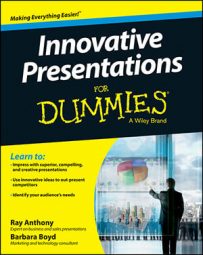In today's polyglot world, a time may come when you're asked to give a presentation to an audience for whom English is not their first language or to give a presentation in a language that isn't your first, but that you know. Either situation can be cause for anxiety, so keep the following in mind when preparing yourself and your presentation for these types of events:
Be aware of gestures that may be acceptable in North America but unacceptable elsewhere. For example, people in the United States tend to smile a lot to convey warmth and friendship, but in some cultures, smiling can be construed as nervousness or, worse yet, a sign that you're hiding something.
If you must give your presentation in another language and feel unsure about the pronunciation or cadence of some words or phrases, write your presentation down, and then record someone who knows and speaks the language well reading it. You can then listen to the recording, which will help you become familiar with your presentation and improve your pronunciation.
Break your bad habits as soon as possible! If you begin mispronouncing a word, chances are you will continue to mispronounce it if you don't correct yourself immediately.
Don't read your presentation nor memorize it word for word, so practice until you can speak in a natural, flowing manner. Each of your visuals should jog your memory as to what you want to say about the point it represents. If you want to keep notes at hand, make sure they are notes, not verbatim sentences. Just a few words should be enough to keep you on track and remember to cover all the necessary points.
Tell your audience ahead of time that your handouts — paper or online — with any important facts and figures from your presentation will be available afterward. Use images or simple charts rather than bulleted lists, which could be difficult for the audience to translate.
Research and use anecdotes, fables, or stories that are both familiar to your audience and illustrate your points.
The question-and-answer session can be the most difficult part of a presentation. Repeat the question in your own words before answering to be sure you understood it, and then answer simply and clearly. When you finish, ask if your response answered the question to get confirmation from the inquirer.
Keeping your presentation jargon-free is key to successfully communicating in both situations. Jargon is different than technical or field-specific language. For example, English is recognized as the primary language in the science and medical fields. If you're speaking to a group of Dutch doctors about your company's linear accelerator, you can use medical terms but avoid saying things like, "That project's in the pipeline" when you mean, "That's the next project we'll be working on."

